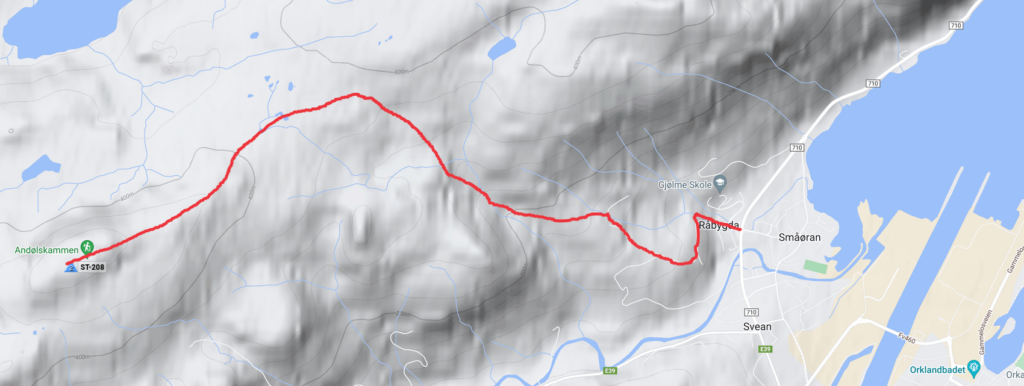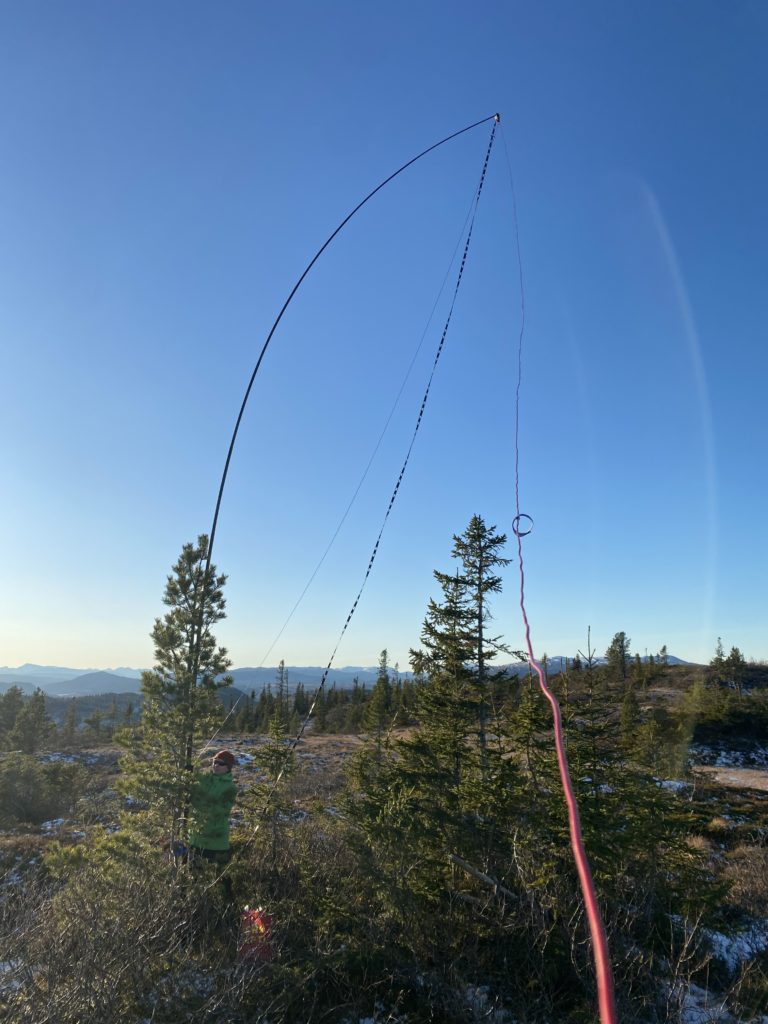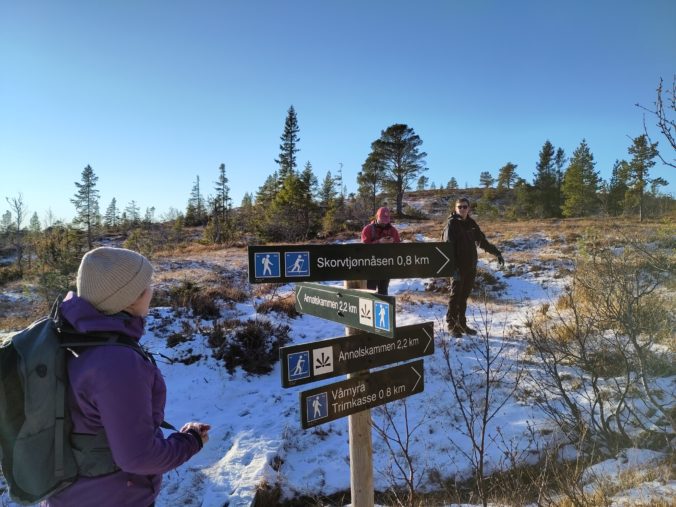The summits around Trondheim have a habit of becoming covered by snow around this time of year. The snow is great for skiing, but there is an intermediate period between the first snow and the time when there is enough snow for safe skiing. On Sunday, November 12th, we decided to get one last on-foot SOTA-activation before the forest becomes unwalkable.

We decided on LA/ST-208 Anølskammen. It is reasonably far from Trondheim, not so high that it would already be covered in a lot of snow, with a relatively gentle ascend. Still, it was a sufficiently long walk to make it a day-long trip.

We had two experimental antennas to test on this trip. LB5PI recently bought an LB8CG DXpeak tri-band vertical antenna, and we also adjusted the ladder line length of our old inverted V doublet. The LB8CG is a trap vertical antenna with two elevated radials covering the 15m, 17m, and 20m bands. It is exceptionally lightweight (at least compared to our usual setup), and we were excited to see how well it would work. This would be the first SOTA activation with the new LB8CG antenna, so LB5PI decided to test it the day before the trip. The results showed a dip that was slightly high in all the bands, but every band still had below 2 in SWR. LB5PI got one QSO, with good reports and good confidence in the antenna.

On the morning of November 12th, we met up at 10.00 to brew coffee and collect the equipment we needed. After a 40-minute drive to Orkanger, we started our journey. We had expected some snow, but it quickly became clear that it was mainly the ice that would be an issue, as there was a slippery cover of ice, both on the road and the path.

When we reached the top, we split in two. LB5PI and LB7JJ erected the LB8CG antenna while LB5DH and LB9WI set up the doublet. The LB8CG-vertical got up relatively easily and painless, while there were some issues with the doublet.

In order to save some time with guy wires, we opted to fasten the mast to a nearby tree. This is quick and easy for shorter masts, but with our 12m spiderbeam mast, it would probably have been quicker to use the guy wires. In addition, we forgot to tape the ladder line to the mast, and the mast could not support the weight of the free-hanging heavy ladder line. This gave the mast a visible banana-shape, and us a lower inverted V. We elected to make do with that height instead of taking it down and up again.

The LB8CG-antenna was the first one ready, and LB5PI was the first one to start calling CQ. The conditions were favorable, and after a listener spotted him, he got a pileup that lasted long enough for both LB7JJ and LB9WI to enjoy it. LB5PI even got a Summit-to-summit QSO, and LB9WI got three! While it is fun with pileups, the joy was somewhat diminished by operators acting poorly in the pileup queue.

The hilltop proved to be quite a popular spot to ascend. While we were there, we were visited by several curious passersby. Amongst them was a pleasant non-local hunter who had taken a wrong turn. Coincidence would have it, he had studied ship design at then-named NTH (now NTNU)!

The weather was cold, but otherwise excellent. All in all, we consider the activation a great success and hope to repeat it soon. Both antennas worked great on the 20m band, but we did not take the time to test the other bands. Thanks to and from LB5PI, LB9WI, LB7JJ and LB5DH.


Leave a Reply